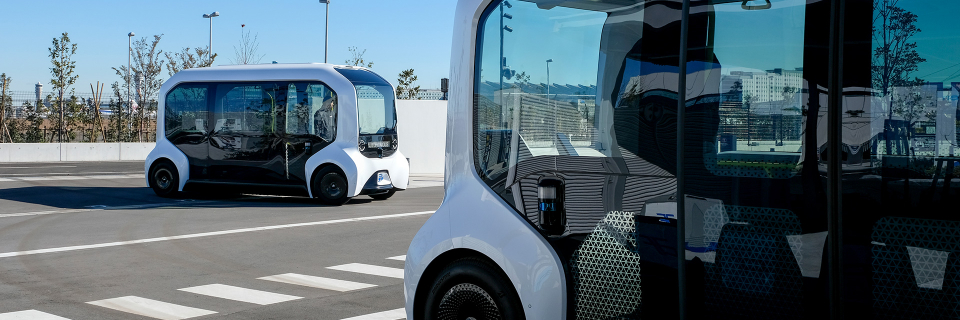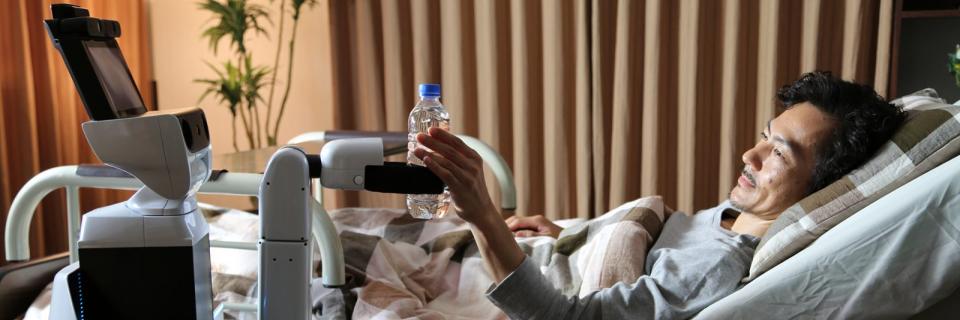Select your preferred store for a more customised experience.
A Future Beyond Cars
Imagine a tomorrow where everyone can get around easily, but not necessarily individually. The thinking has gone beyond cars to dreaming up different ways of looking at mobility. At the core of it is a fully electric, self-driving vehicle that is repositioning Toyota from auto-maker to mobility provider, and could soon transform the way we move around. Here are three real examples of how Toyota is bringing about a future beyond cars.

1: Adaptable mobility: the e-Palette
The e-Palette is a blank slate for all kinds of transport needs. Shaped a bit like a sleek toaster, the vehicle has a high ceiling and a low floor, so a person can walk straight in, as if they were walking into a train carriage. Inside, the layout is wide and open so it can be fitted to different users’ needs. And that’s the key. The e-Palette is made to be shared.
The e-Palette gives us a glimpse of a future where autonomous vehicles are seamlessly shareable between people and businesses. Toyota plans to one day team with popular retail and service outlets to transform e-Palettes into mobile shops, transports and modern food trucks.
An e-Palette vehicle that served as public transport during the day could be quickly converted to ship packages overnight. Brilliantly, the e-Palette’s flat exterior displays as a screen. So, whenever an e-Palette switches businesses, the exterior graphics can be instantly changed.
The goal of the e-Palette is to “create mobility for all” by making transportation more accessible. It may seem like the distant future, but e-Palette will soon be in full autonomous operation; It's slated to be the main transport provider in the real-world environment of Woven City, Toyota’s own testing town, just down the road in Japan.
2: Assisted mobility: Vehicle virtual assistants
While e-Palette is yet to hit New Zealand roads, one development that’s already happening globally is the jump of digital assistance into vehicles. Amazon’s Alexa is a voice-activated personal assistant that interacts with the smart devices around the home.
Toyota's developing partnership with Alexa, will give customers the ability to use Alexa in the home and car. So in the future, if you’re in your car and say, “Hey Alexa, turn on my lights at home”, it can action that request. At home, you can say “hey Alexa, unlock my car” as you’re on your way out the door.

3: Mobility at home, Toyota’s Human Support Robot
Toyota is also honing in on home territory with the Human Support Robot, HSR for short. Designed to help out people with restricted movement, the HSR is a sort of robotic butler that responds to voice commands and tablet controls.
The Human Support Robot’s lightweight body has an extendable arm that can pick things up off the floor, suction-lift thin objects, reach items in high places, open curtains, and perform other household tasks. Toyota’s HSR has omni-directional wheels, so it never gets boxed in. Artificial intelligence is no substitute for human care, but the HSR can be operated remotely by family or friends, with the operator’s face and voice displayed in real-time. This allows for genuine human interaction as the HSR goes about its work. The robot is teachable and can observe things like which is their user’s favourite mug - then bring their tea in it.
Last year the HSR began its first home trial in the home of a UK family whose father is confined to a wheelchair. Before long, Toyota hopes to be able to place HSRs in many such homes, making life more accessible and helping take the pressure off care workers.